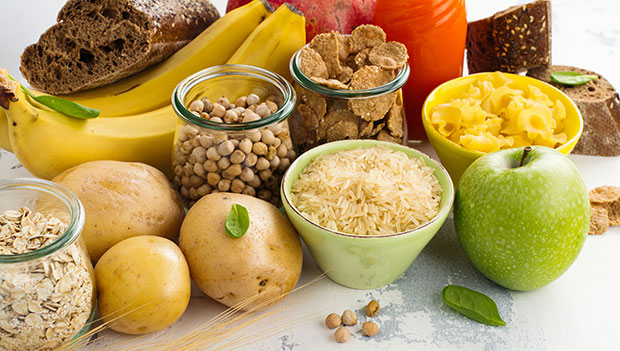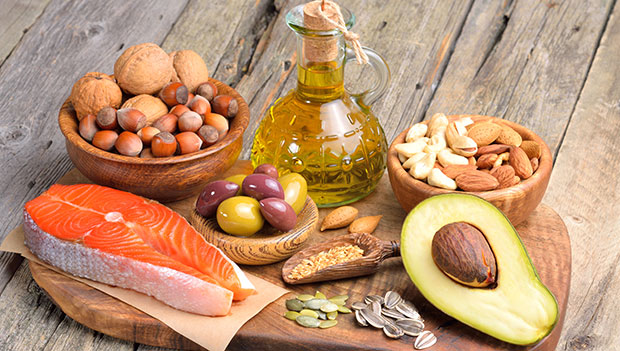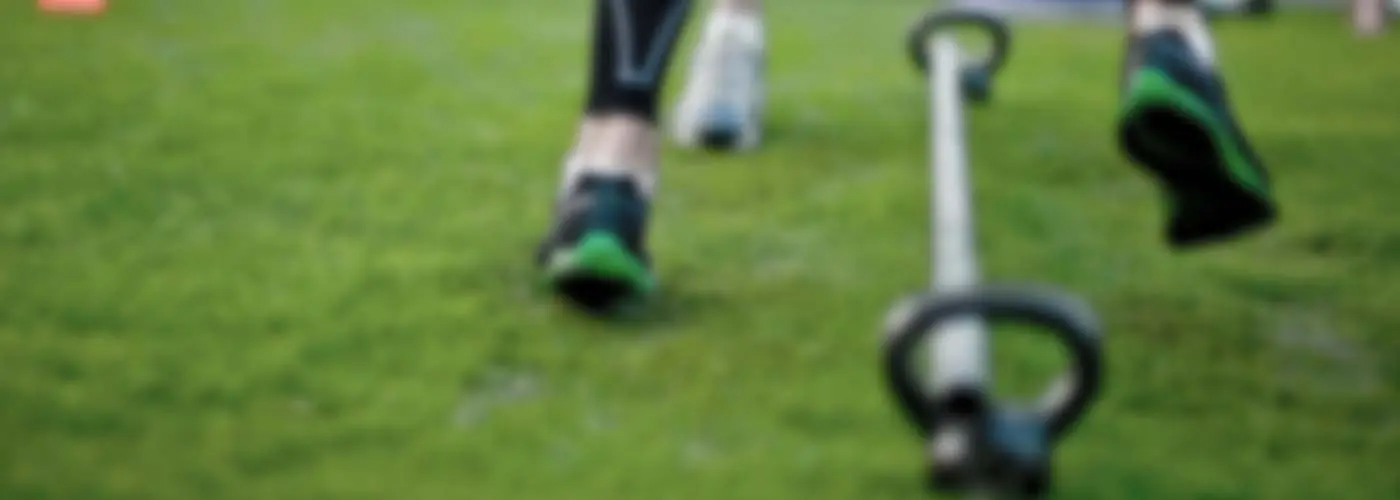
How to Lose Weight Fast | Workouts to Lose Weight | How to Lose Weight Without Exercise | How to Eat to Lose Weight | How to Burn Belly Fat | Best Weight Loss Apps | Fat-Burning Foods | Best Fat Burners | Best Weight-Loss Supplements
For some, the goal of sustainable weight loss can seem like a moving target at times. Countless crash diets and supplements promise quick weight loss results, though fail to provide lasting success, making weight regain inevitable. This may leave you wondering, how can I safely achieve accelerated weight loss and actually keep it off?
Here we'll explain the top science-backed methods for losing weight fast, plus, how to keep it off—for good.
Weight Loss Explained
To lose weight you'll have to take in less calories than you burn on a regular basis. This is referred to as being in a calorie deficit.
When a calorie deficit is maintained for an extended period of time, this results in weight loss. During this process, your body burns through its fat and carbohydrate stores for energy. In order to expedite the weight loss process, you'll have to create a larger calorie deficit. This can be accomplished by further reducing your calories and/or increasing your physical activity.
However, be sure to tread with caution, as dropping your calories too low can have a number of negative side effects including slowing your metabolism, causing rapid weight regain or loss of muscle mass, and increasing your risk of nutrient deficiency.
The amount of weight you'd like to lose will determine how long the process will take. Keep in mind that you may hit some sticking points along the way, and that's alright. With some small adjustments you’ll be right back on track with your goals.
Nutrition: The Macronutrients
Getting your nutrition dialed in is a key part of the weight loss process. While there are countless fad diets that promise rapid weight loss, these often promote unhealthy practices and don't focus on long term success and diet sustainability.
For best results, you'll want to create a well-balanced diet that doesn’t overly restrict any macronutrients (protein, carbs, fats). In the end, the ideal diet for weight loss is one that's sustainable, enjoyable, and leaves you feeling energized and satiated.
For most people, this consists of a diet that is:
- High in protein
- Moderate in fat
- Lower in carbohydrates
- High in fiber from whole grains and vegetables
Protein
Protein, which is made up of amino acids, serves as the body’s building blocks for everything from muscle, to skin, teeth, and bones. When dieting, lean (lower fat) proteins are your friend. They keep you full and tend to be fairly low in calories. In addition, they help preserve precious muscle mass considering that maintaining a calorie deficit for a period of time can put you at risk of losing muscle.

Common examples of lean protein sources include:
- Chicken breast
- Lean ground turkey
- Lean cuts of pork or beef
- Fish
- Tofu and other high protein meat substitutes
- Low-fat cheese and cottage cheese
- Eggs and egg whites
Carbohydrates
Carbohydrates (or carbs) are the body's main energy source. Carbs power all of our daily functions from exercising, to thinking, to breathing. Most traditional diets are quite high in carbs. However, when attempting to lose weight rapidly, reducing your carbs is a common strategy as a means to reduce calories.
That said, it's important not to reduce them too low or you may suffer a number of side effects including fatigue, headaches, constipation, and reduced exercise performance.
Examples of high-fiber carbohydrate sources include:
- Brown rice
- Legumes (also provide protein)
- Quinoa
- Sweet potatoes
- Whole-grain pasta
- Oats
- Low-sugar cereals
- Rice cakes

Common examples of lean protein sources include:
You'll also want to include plenty of non-starchy vegetables such as:
- Broccoli
- Asparagus
- Peppers
- Brussels sprouts
- Green beans
- Mushrooms
- Onions
- Carrots
Fat
Fats serve as the body's secondary energy source for most people. In addition, they aid in the production of important hormones and contribute to metabolic processes throughout the body. Fats are more energy dense, containing nine calories per gram, whereas protein and carbs contain four calories per gram.
This means when dieting to lose weight, you'll want to be aware of your fat intake as the calories from fat can add up quickly. That said, dropping them too low can potentially result in side effects such as hormone imbalances and food cravings.

Examples of healthy fat sources include:
- Avocado
- Olive oil
- Nuts and nut butters
- Seeds (sunflower, chia, hemp, flax)
- Fatty fish
If you find yourself struggling to come up with a proper weight loss diet, you may want to consult a registered dietitian for individualized guidance.
Exercise
Another important piece of the weight loss picture is exercise. While research suggests that weight loss can be achieved from dieting alone, including exercise can greatly accelerate the process.
For best weight loss results, it's recommended to include a combination of resistance training (also known as strength training) and cardiovascular exercise. Regular cardio helps accelerate fat burning, while resistance exercise helps build muscle. In the long run, increasing your muscle mass can lead to an increase in your resting metabolic rate, or how many calories you use at rest. This makes it easier to maintain weight loss.

There are endless methods of performing cardio from rowing, to air bikes, sled pulls, and even battle ropes.
In terms of resistance exercise there are also a number of options to choose from including free weights, weight machines, resistance bands, bodyweight movements, and CrossFit, which provides both resistance and cardio exercise simultaneously.
Your individual exercise capacity will vary depending on your level of experience. For those just starting out, setting a goal to exercise three days per week is usually attainable. Start out with a combination of cardio and resistance exercise, approximately 30 minutes of each. As you progress, slowly increase the intensity of your workouts as tolerated.
For a more individualized exercise regimen, seek the guidance of a certified personal trainer to steer you in the right direction.
How To Get Started
To get started on your weight loss journey you’ll first need to determine your maintenance calories, or how many calories you need to maintain the same weight. While you can use various equations to determine this, the easiest way is to use one an online calculator.
Once you've determined your maintenance calories, a good rule of thumb is to subtract 500 calories to promote weight loss. Now if you're looking to lose weight a bit faster you may start with a 750-calorie deficit, though it's best not to go much lower than that to start.
Aim for a weight loss of 0.5-1 percent of your body weight per week as this rate has been shown to help preserve muscle mass during the weight loss process. In addition, the general recommendation for protein intake while dieting is 0.6-1.4 grams per pound (1.4-3.1g/kg) of body weight, which also aids in muscle mass retention. The rest of your calories will come from carbs and fats.
You may find an initial rapid drop in weight within the first week or two, though some of this weight may be from water and glycogen, the body's stored form of carbohydrates.
Focus on filling up on lean proteins and non-starchy vegetables while limiting your portions of high carb or fatty foods. Many people find it helpful to use a meal tracking app to keep track of your calories and macronutrients throughout the day.
Regularly weigh yourself and log your meals to keep track of your progress. If your weight loss plateaus for more than two weeks in a row, you may need to drop your calories slightly. Most will find that dropping calories by an additional 200 will help weight loss get moving again. Another way to break through a plateau is to increase cardio exercise to burn a bit more calories. Some people also choose to take supplements like PhenQ to help burn fat or download weight loss apps, like Noom, to assist their progress.
Continue following this protocol until you're within reach of your goal weight.
How To Keep It Off
Once you've reached, or come close to your goal weight, you'll have to implement some strategies to keep it off. For many, this is the hardest part of the journey, as research shows that most people that lose weight gain at least 50 percent of it back within two years. This is due to a number of potential factors that can promote weight gain throughout your early adulthood. Your diet should be thought of as a long-term solution to improve your health rather than a short-term fix.
The key to maintaining your weight loss is changing your behavior towards food during the dieting process. While easier said than done, developing an overall healthier lifestyle and creating sustainable habits can help lead to lasting weight loss success. For some, this may require the help of a registered dietitian or psychologist to stay on track and provide a level of accountability.

Those that have had weight loss success found a few habits to be particularly helpful including:
- Not eliminating particular food items
- Cycling carbs to match daily activity levels
- Swapping out higher calorie items for healthier choices
- Spacing protein throughout the day to keep hunger at bay
- Staying active by incorporating daily physical activities
Maintain the exercise regimen you've developed during the weight loss process as this will help maintain your new weight. Continue to follow the nutrition principles that helped you lose weight including portion control of high carb and fatty foods, as well as plenty of lean proteins and non-starchy vegetables. Many people find it helpful to continue tracking their meals in order to quantify their diet.
Final Takeaway
Here are the key takeaways of how to lose weight quickly and keep it off:
- Determine your maintenance calories and subtract 500-750 calories
- Ensure you are getting about 0.6-1.4 grams of protein per pound (1.4-3.1g/kg) of body weight
- Focus on eating lean proteins, non-starchy vegetables, high-fiber carbs, and healthy fats
- Regularly exercise including both cardio and resistance exercise at least three days per week
- Weigh yourself regularly and consider using a meal tracking app to track macros
- Adjust calories slightly should you hit a weight loss plateau
- Once weight loss is attained, implement the healthy habits you have learned to help maintain your weight
Losing weight quickly is no small feat. It requires a great deal of dedication to both nutrition and exercise. That said, with consistent effort and determination, quickly losing weight and keeping it off is totally attainable and worth the effort. Those that have had success even report a number of surprising changes in their lives following weight loss. Good luck on your weight loss journey!
How to Lose Weight Fast | Workouts to Lose Weight | How to Lose Weight Without Exercise | How to Eat to Lose Weight | How to Burn Belly Fat | Best Weight Loss Apps | Fat-Burning Foods | Best Fat Burners | Best Weight-Loss Supplements
Get ACTIVE on the Go


Couch to 5K®
The best way to get new runners off the couch and across the finish line of their first 5K.
Available for iOS | Android








Discuss This Article